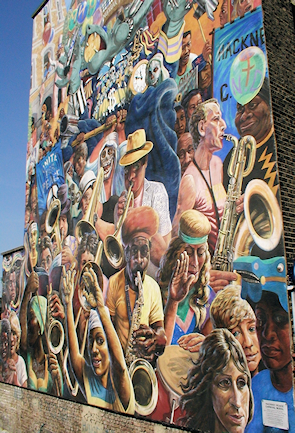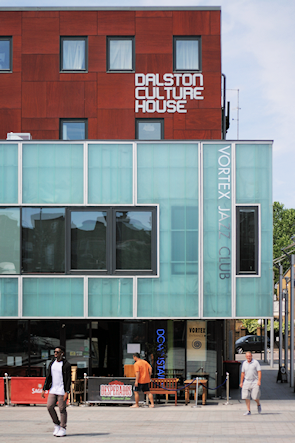Dalston
Dalston, Hackney
Situated on Hackney’s western side, Kingsland and Dalston are twin localities but the latter name is commonly applied to the whole district

First recorded in 1294 as Derleston, the settlement probably began life as the farmstead (tūn) of a man called Dēorlāf. In 1388 the name was rendered as Dorleston – much as it is pronounced today.
By the mid-18th century (when the name was first recorded with its present-day spelling) Dalston consisted primarily of a handful of large houses and a cluster of cottages on the north side of Dalston Lane.
In the early 19th century another cluster began to form at the western end of Dalston Lane, with terraced houses for the upper middle classes. Dalston Green – as this satellite locality was known – had fused with the earlier hamlet by 1831 and building then began to spread southwards.
Kingsland station opened in 1850 and was replaced by Dalston Junction in 1865, spurring further growth that soon created a continuum with Hackney. The last of the nurseries for which Dalston was once known had disappeared by 1891.
The suburb was deemed more respectable than most of its neighbours and apparently some professional families who tried moving further afield discovered too many working-class newcomers in the remoter suburbs and returned to Dalston.
In 1905 the Four Per Cent Industrial Dwellings Company built Navarino Mansions for Jews from the East End. After the Second World War the county and borough councils cleared large areas of Dalston – some bomb-damaged, some not – for a series of housing estates that now accommodate the majority of the district’s inhabitants.
In the far east of Dalston, Fassett Square (or at least two sides of it) provided BBC set designers with the primary inspiration for the architecture of EastEnders’ Albert Square.

Dalston Kingsland station reopened in on the North London line in 1983 and Dalston Junction closed three years later, when the service to Broad Street station ceased.
A new Dalston Junction opened in 2010 as part of the London Overground’s East London line extension. The station is located at the western end of Dalston Lane.
Holy Trinity church, on Beechwood Road, is the ‘clown’s church’ where the great Joey Grimaldi is honoured with a painting, a stained-glass window and a special prayer at the annual clowns’ service on the first Sunday in February each year.
Ridley Road market has nearly 200 pitches, and an emphasis on world foods.
Although its arts scene has suffered some setbacks in recent years, Dalston is home to the Rio cinema, the Arcola Theatre and the Culture House on the newly created Gillett Square, where the Vortex jazz club is based.
Dalston’s population includes several hundred representatives of all London’s main ethnic communities except those of Pakistani origin. The three most numerous groups are of white British, black African and black Caribbean birth or descent. The ward’s population grew by 42 per cent between the 2001 and 2011 censuses. This is a deprived area, but no more so than the rest of the borough.
Razorlight’s ‘Don’t Go Back To Dalston’ is a jauntily insistent track from their 2004 album Up All Night.
